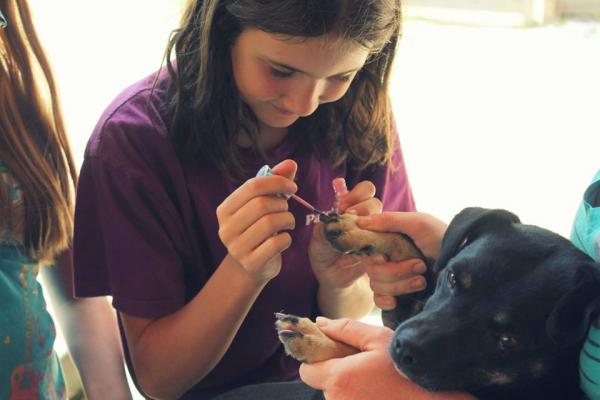Jack Russell Terriers are energetic, intelligent, and loyal dogs. Proper care helps them thrive in both city and country settings. Whether you’re preparing your home or learning about health and grooming needs, here’s your go-to guide.
Preparing your home in advance ensures a smooth transition for your new pup. Here’s a checklist of essential items for your Jack Russell:


Jack Russells have an average lifespan of 13–16 years. A well-cared-for Jack can lead a long, active, and healthy life.
Jack Russell Terriers are extremely active dogs that thrive on daily physical and mental stimulation. They are best-suited for homes with at least an average-sized fenced yard, where they can safely burn off energy throughout the day.
That said, Jack Russells can absolutely live in apartments or smaller spaces—as long as their exercise needs are met. Without adequate activity, these intelligent, high-energy dogs can become bored and frustrated, leading to unwanted behaviors such as barking, chewing, or digging.
To keep your Jack Russell happy and balanced:
A tired Jack is a happy Jack!
While generally healthy, Jack Russells may be prone to certain conditions. Being aware of these can help you take early preventive steps.
The most common medical issues that a Jack Russell owner should be on the lookout for are described below.
CERF (Canine Eye Registration Foundation), which aims to eliminate hereditary eye diseases in purebred dogs, lists Lens Luxation and Cataracts as the most common eye diseases for Jack Russell Terriers.
The most common hereditary eye disorder for Jack Russell terriers is Lens luxation (a.k.a. ectopia lentis). Although this disorder is rare, when it does occur, it tends to occur in dogs between the ages of 3 and 8 years old. Lens luxation is when the lens of a dog's eye becomes displaced. The two types of lens luxation are posterior luxation (the lens slips to the back of the eye) and anterior luxation (the lens slips to the front of the eye). Anterior luxation is the more severe of the two since the lens can end up rubbing against and damaging the dog's cornea. Anterior luxation can also sometimes lead to glaucoma and partial or full blindness. A dog usually needs to undergo medical or surgical procedures to treat lens luxation. The non-hereditary version of lens luxation, secondary lens luxation, is caused by trauma to the dog's eye.
The two most common musculoskeletal conditions in Jack Russell terriers are Patellar luxation (a.k.a. luxating patella) and Legg–Calvé–Perthes syndrome (a.k.a. Avascular Necrosis of the Femoral Head).
Cataracts (usually hereditary but also caused by old age, eye injury, or diabetes) occur when the lens of the dog's eye hardens, causing cloudiness in the eye. Cataracts will result in the dog having blurred vision and can, if left untreated, lead to partial or full blindness.
Legg–Calvé–Perthes syndrome occurs in the hip, and is characterized by the ball part of the femur deteriorating after an interruption of blood flow. This condition is most common when a dog is between 6 and 12 months old. In some cases, this can result in lameness of the back legs, atrophy in the thigh muscles, and overall pain in the joint.
Patellar luxation is a hereditary disorder that's characterized by the kneecap sliding out of place. Sometimes, this condition is only temporary, and can be apparent when the dog is running while holding one of its legs in the air, but then resumes running in a normal manner once the kneecap slips back into place. In extreme cases, patellar luxation can result in arthritis, torn knee ligament, and sometimes even surgery.
Jack Russells require moderate grooming:


Since the beginning of the breed in the early 1800s, Jack Russell Terriers have been bred as a working breed. To preserve their working terrier traits, inbreeding among Jack Russells has always been somewhat restricted, resulting in a “broad standard” (varied sizes/types/other characteristics). This broad standard and working terrier mentality have made the Jack Russell Terrier a great working terrier.
The Jack Russell breed got its name from the Reverend John Russell in the mid 1800s. John Russell, an avid fox hunter in Devonshire, England, was said to have bred Jack Russell Terriers with fox hunting in mind.
When you consider the traits that would be needed for a breed’s success in fox hunting, the Jack Russell certainly seems to be the perfect fit. The Jack Russell’s personality, intelligence, coloring, small frame, and flexibility (for underground maneuverability) all combine to make the Jack Russell an excellent fox-hunting companion.
The “fox terrier” that the Reverend John Russell bred in the mid 1800s has been able to pass on these traits for more than 100 years thanks in large part to the English working terrier enthusiasts, as well as the modern-day efforts of organizations such as the JRTCA, all of which have had the goal of preserving these traits in the Jack Russell Terrier breed that we have today.

There are two varieties of the Russell Terrier: the Jack Russell Terrier (a.k.a. Irish Jack Russell Terrier or Miniature Jack Russell Terrier) and the Parson Russell Terrier.
Here at Patch Wood Farm we are dedicated to breeding and importing the highest quality of Irish Jack Russell Terriers and Hunt Terriers

©2025 Imported Jacks. All rights reserved.